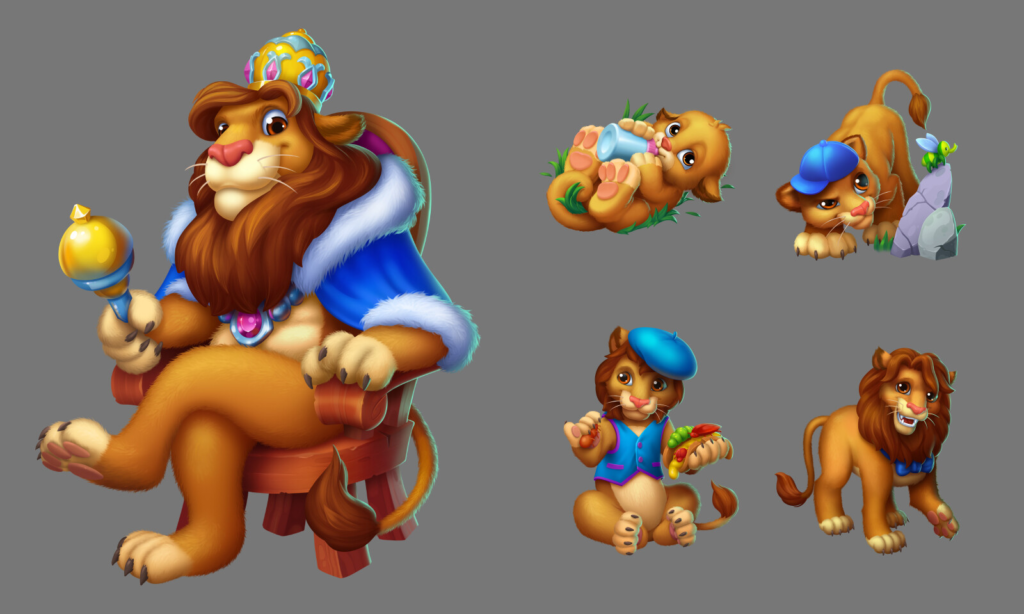
Let’s face it, gaming has changed. Not just in terms of graphics or storytelling, but in how inclusive the experience can be. In the United States, where millions of people rely on adaptive technology every day, game developers are finally rethinking how visual design can be more welcoming. AAA games, once laser-focused on sheer visual spectacle, are now also being built with real people and real needs in mind.
Whether it’s bold UI adjustments, easier-to-read environments, or adaptive contrast settings, accessibility is transforming the creative process. Teams working with specialized partners offering AAA game art studio services are ensuring that visuals aren’t just impressive, but also intuitive and inclusive.
Why This Shift Matters Right Now
There’s a growing recognition in the U.S. that gamers come from every walk of life, and that includes people with visual, motor, or cognitive differences. Accessibility isn’t just a feature anymore; it’s a mindset that’s reshaping how developers approach the design of their games from day one.
As conversations around inclusion gain ground, studios are taking action not just for legal compliance, but because it’s the right thing to do. And thanks to advancements in technology and support from experienced collaborators offering AAA game art studio services, it’s never been easier to bring inclusive visual design to life.

The Little Details That Make a Big Difference
In most games, the first thing players see is the user interface menus, health bars, maps. For some players, especially those with visual impairments or reading challenges, these elements can make or break the experience. That’s why developers are getting more thoughtful with their choices.
We’re seeing fonts that can scale, icons that rely on shape instead of color, and high-contrast modes that help everyone, not just those with diagnosed conditions. Studios often team up with vendors offering AAA game art studio services to ensure that the design of these elements is clean, readable, and aesthetically on-brand.
Players Are the New Designers
Accessibility efforts are now being guided by the people who know best: the players themselves. In the U.S., many studios are directly involving gamers with disabilities during the early stages of development. It’s no longer just theory, it’s first hand feedback.
This kind of input often shapes everything from visual effects to navigation aids. And when those insights are integrated into the workflow especially through partners providing AAA game art studio services the end result is a game that feels intentionally designed, not patched together.
Studios Stepping Up and Setting Standards
Some studios in the U.S. are leading the charge. The developers behind The Last of Us Part II made headlines for their expansive accessibility features, many of which involved detailed visual design considerations. Meanwhile, companies like Microsoft have made accessibility a core focus, even creating hardware and interface standards that others are now following.
These innovations wouldn’t be possible without the support of high-caliber art teams. Many of the most impactful visual upgrades are created or refined through AAA game art studio services, which bring a level of polish and technical expertise that helps accessibility and aesthetics go hand in hand.
Smart Tools, Smarter Design
Modern game engines like Unreal and Unity now come with built-in features that support accessible visual design. Developers can run simulations to test readability, contrast, and motion sensitivity all before launching a beta.
But it’s not just about using tools it’s about using them wisely. This is where collaboration becomes essential. Studios are leaning on specialists who offer AAA game art studio services to help translate raw data into thoughtful visual decisions that feel good to play.
Navigating Creative Challenges
Designing with accessibility in mind doesn’t mean watering down creativity. But it does mean thinking differently. A dark, atmospheric menu might look cool but is it usable for players with low vision? A glowing spell effect might be exciting but could it trigger migraines or visual discomfort?
These are the questions art teams and directors are starting to ask every day. And often, they bring in external support such as AAA game art studio services to help bridge the gap between imaginative style and real-world usability.

Customization Is the New Default
Personalization is quickly becoming one of the best ways to address accessibility. Players love options whether it’s resizing the HUD, turning off screen shake, or adjusting brightness levels to their comfort zone.
More U.S. studios are designing visual assets that can adapt to player needs. And by working with teams experienced in AAA game art studio services, they’re ensuring that these options don’t just exist, but feel like a natural part of the game’s visual language.
Teaching Designers to Think Inclusively
Accessibility isn’t just a technical fix, it’s a cultural shift. More American studios are investing in training their design and art teams to understand the importance of inclusive visuals. These lessons ripple through every aspect of game development, from mood boards to finished textures.
Partnering with outside experts like those providing AAA game art studio services brings fresh perspectives to the table. Together, they’re helping create games that are not only beautiful but respectful of every kind of player experience.
Final Thoughts
Accessibility has moved from being a niche discussion to a core design priority. For AAA studios across the U.S., the mission is clear: build games that look incredible and feel welcoming. That includes players who rely on adaptive technologies or just want more control over their visual experience.
Behind the scenes, much of this progress is made possible by partnerships with teams offering AAA game art studio services. These artists, designers, and developers aren’t just making games, they’re opening doors. And as we revisit franchises, yes, even thinking about the full list of all Call of Duty games in order to play the ones that stand out are often those that made everyone feel like they belonged. Because when you design for inclusion, everyone wins.